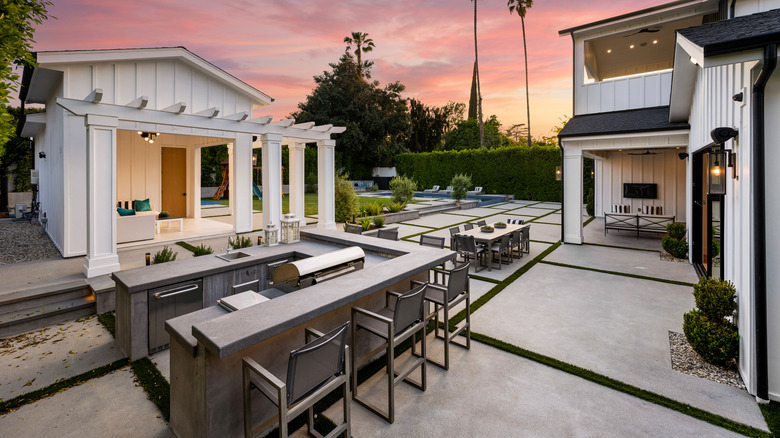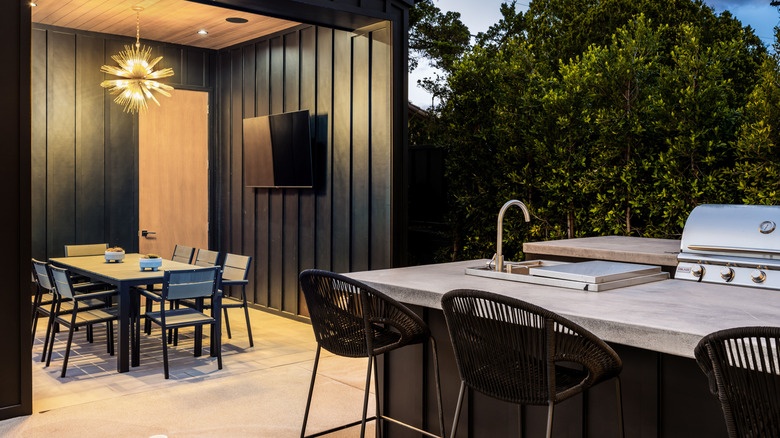
An outdoor kitchen can increase your home’s value, lower utility bills since you won’t be using air conditioning to cool inside, and extend your living space outside during temperate seasons. But designing an outdoor kitchen is more complicated than knowing where to position your grill. It might even be an expensive project that isn’t worth the investment. We spoke with Michael Hidalgo, Director of BBQGuys PRO Sales, about the factors to consider when designing an outdoor kitchen. “It’s important to start by considering how you plan to use the space,” he told us. “Will it be primarily for cooking, entertaining guests, or hosting family gatherings? The intended use will influence everything from layout to appliance choices.” You should also consider the amount of space you have to work with and have a realistic approximation of how many people would use an outdoor kitchen to ensure you’re not making an unnecessary expenditure.
Another key decision is whether you want a modular system. That would mean selecting pre-designed cabinetry, countertops, and appliances that are pieced together or a kitchen that’s custom built to your specifications. “A custom kitchen offers full design flexibility but usually comes with a higher cost and longer installation time,” according to Hidalgo. “Modular kitchens can save time and money while still delivering strong functionality and style.” You will also need to decide whether you’ll be grilling with propane or natural gas. You may not have access to a gas line, and adding one can be expensive.
Design an outdoor kitchen that fits your lifestyle and budget
An outdoor kitchen is ideal for people who enjoy entertaining family and friends, especially when it’s too hot to cook indoors. The downside, though, is that you’ll need to regularly clean and maintain the appliances and dining area year-round during inclement weather. As Michael Hidalgo noted, “Ultimately, the decision comes down to lifestyle. … [T]he benefits often outweigh the drawbacks and with the right setup, it can be a seamless extension of your home.” The layout and equipment for your outdoor kitchen are entirely up to you. Typically, there will be a grill, refrigerator, sink, and some form of storage. But one of your must-haves might be a smoker or a pizza oven, or you might prioritize a prep area or a bar set-up so guests can gather round while you cook. You’ll need to account for all of that when budgeting. “The key is designing a setup that supports the way you cook and entertain, rather than following a standard checklist,” Hidalgo said.
So once you figure out your baseline of what works best for you, you’ll get a clearer idea of your financial investment. Inevitably, though, as material costs continue to spiral upwards, an outdoor kitchen can be a pricey venture, and high-end appliances, custom cabinetry and countertops, and expanded living areas can hit $100,000 or higher. According to Hidalgo, though, “a simple modular set-up on a back porch, designed to create a built-in look without major construction” could start at a more affordable $4,000.









